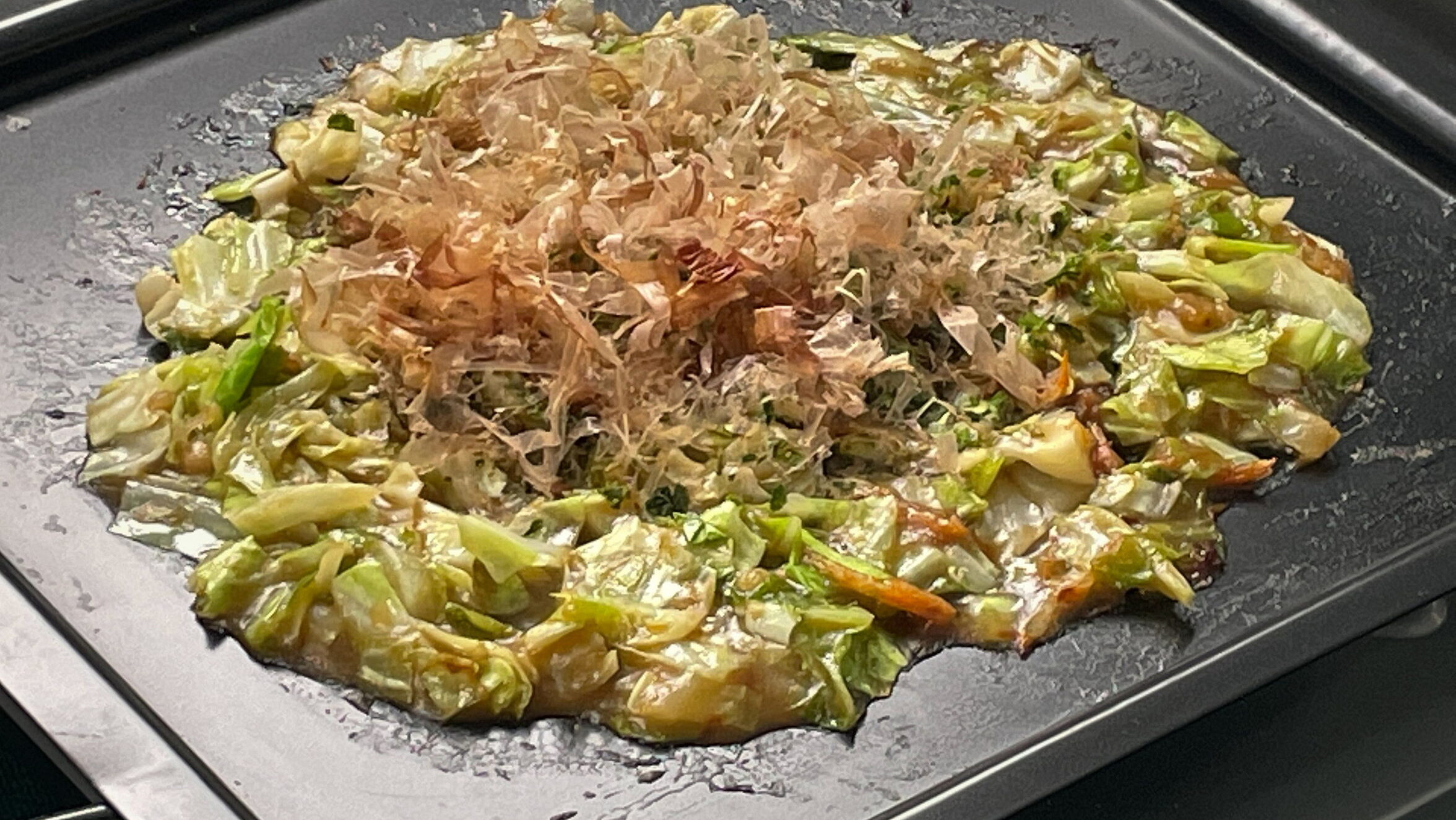
Alright, gather ’round folks, and let me introduce you to a Tokyo specialty that’s a whole lotta fun: Monjayaki! It’s kinda like a savory pancake, but with its own unique twist. You cook it right at your table on a hot griddle, and everyone digs in together. It’s messy, it’s interactive, and it’s absolutely delicious. Let’s get this party started!
Dish Name: Monjayaki / もんじゃ焼き
- Region / Location: Tokyo, especially the Tsukishima district, but found throughout the city.
- Primary Area of Tradition: Tsukishima district, and all over Tokyo.
- Main Ingredients: Wheat flour, cabbage, pickled ginger, corn, sakura shrimp, tempura scraps, bonito flakes, soy sauce, Worcestershire sauce.
How It’s Eaten / Served
Monjayaki is cooked on a teppan (iron griddle) right at your table. The cabbage and pickled ginger are chopped coarsely, and the corn is well-drained. You mix water, Worcestershire sauce, bonito flakes, and soy sauce in a large bowl, then add the wheat flour and mix it all up. Next, you toss in the sakura shrimp and tempura scraps. Heat up a teppan to about 230°C (450°F), add some oil, and then put the ingredients on the griddle (drain off excess liquid first). Stir-fry the ingredients until the cabbage starts to wilt. Then, you make a donut shape with the ingredients, creating a well in the center. Pour the remaining batter into the well and cook for about 2 minutes, until it thickens. Finally, you mix everything together, spread it thinly on the griddle, and cook for another 3-4 minutes until it’s slightly browned and crispy. Sprinkle with some aonori seaweed and dig in! You can also make this at home on a hot plate.
Cultural Background and Preservation
Monjayaki started out as a simple snack for kids, especially in the post-World War II era when food was scarce. Back in the 1940s, kids would mix wheat flour with water and add soy sauce or syrup. Since paper and calligraphy tools were hard to come by, they’d even practice writing characters on the griddle with the batter, which is why it was called “Mojiyaki” (文字焼き), meaning “grilled letters.” Over time, “Moji” morphed into “Monja,” and as the economy grew, people started adding more ingredients like cabbage, corn, and tempura scraps. Sadly, the mom-and-pop candy stores where kids used to enjoy Monjayaki began to disappear. But a few Monjayaki restaurants popped up to keep the tradition alive, and Monjayaki evolved into a popular dish for adults. Today, the teppan (iron griddle) and the small spatula are essential tools for making and eating Monjayaki. While the classic way to eat it is to scrape it off the griddle with the spatula as it cooks, there’s a huge variety of ingredients and flavors to enjoy.
The “Tsukishima Monja Promotion Association,” with 54 member restaurants in the Tsukishima area, works hard to promote Monjayaki. They organize events like the “Tsukishima Monja Autumn Thanksgiving Fair,” issue meal vouchers, and sell Monjayaki souvenirs and DIY kits featuring their official character, “Tsukishima Ninja Monnyan.”
Additional information:
- Sakura Shrimp (桜えび): Small, pink shrimp that add a savory and slightly sweet flavor.
- Tempura scraps (揚げ玉): Crispy bits of fried tempura batter, adding a crunchy texture.
- Aonori (青のり): Dried green seaweed flakes, used as a seasoning.
- Teppan (鉄板): A large iron griddle used for cooking.
The information about regional cuisine featured on this website (Piggy's Grandma of Japan) is summarized and adapted from the Ministry of Agriculture, Forestry and Fisheries of Japan (MAFF) website, "Our Regional Cuisines"Additional commentary is provided based on the unique experiences and perspectives of the site's editors.
The copyright for the original content regarding regional cuisine belongs to the Ministry of Agriculture, Forestry and Fisheries of Japan.
The summaries and adaptations published on this site are intended for informational purposes only. Piggy's Grandma of Japan does not guarantee the accuracy or completeness of this information. For the most accurate and complete details, please refer to the original pages on the MAFF website.


